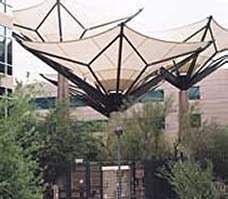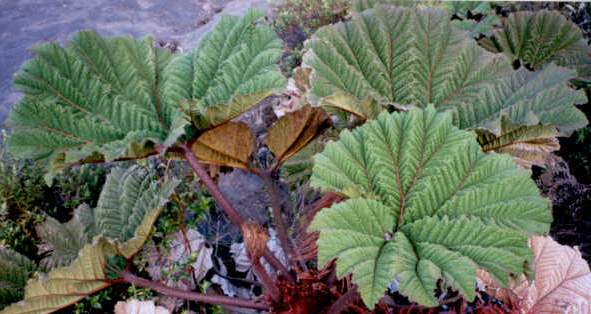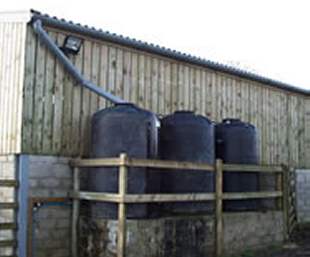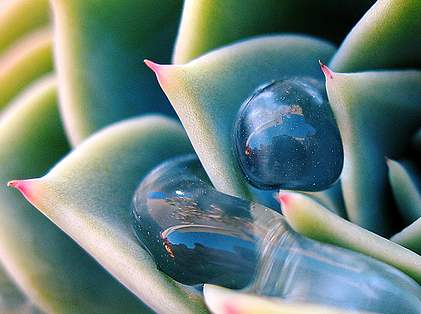
Rainwater HarvestingFresh water is of critical importance to most plant and animal life on land.Rain water is the biggest single source of fresh water. Rainwater harvesting covers the techniques for capturing, filtering and storing rain water, in order to prepare it for use.
TechniquesTwo fundamental technologies are required:
Sometimes - particularly if the container is low-lying - pumps may be needed to move the water to where it is required. The storage facility may consist of a series of containers, linked by continuous siphons or overflow pipes:
Some systems make an effort to intercept the rain as soon as possible - since once the water reaches the ground it starts getting muddy and polluted. Sometimes, rainwater harvesting systems are also used to generate hydro-electric power.
PlantsPlants are masters of rainwater harvesting. They allow water to soak into the ground - and then they suck it back out again using a distributed network of fine roots.
 Gunnera leaf drainage patterns
Plants tend to use most of the water they collect. We can eat them, eat their fruit - or draw inspiration from their designs.
Dew HarvestingPlease see also our dew harvesting page.
Links
|



